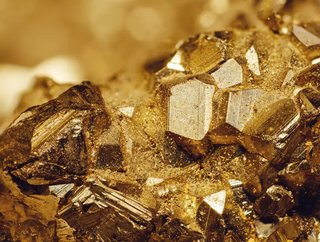The new star wars: mining in space

Adam McKay's 2021 movie "Don't Look Up" might be fictional, but space mining is not — or rather, it's merely not yet realised. Plans for the hunt for precious materials in outer space have been gradually taking shape over the last few years.
The concept of space mining derives from the idea of finding rare composites from near-Earth asteroids (NEAs) that began to circulate heavily in the early 90s. Several plans were discussed, from robotic exploration to private commercial astronauts as space miners, aimed at revolutionising the commercial space economy.
On November 25th, 2015, former US President Obama signed a bill dubbed as the Space Law upon approval from the US Congress. It essentially allows companies in the country to exploit asteroids and other "space resources" if they are capable of recovering the resources. However, it is to be noted that the 1967 UN's International Treaty of Outer Space forbids countries to reserve sovereignty rights upon celestial bodies.
Several companies with an interest in the NEAs were born afterwards, such as Bigelow Aerospace, Deep Space Industries, Mars One, and Orbital Sciences Corporation. The plethora includes Jeff Bezos' Blue Origin aerospace company that builds a rocket called the New Glenn, Elon Musk's famous SpaceX firm with its cargo missions to the International Space Station onboard its recyclable Falcon 9 Dragon rocket, and Planetary Resources, a group supported by Google executives Larry Page and Eric Schmidt, film director James Cameron, magnate Richard Branson, owner of Virgin, and other Silicon Valley shareholders.
For another layer of assurance, the US, Australia, Canada, Italy, Japan, Luxembourg, the United Arab Emirates, and the UK, Ukraine, New Zealand, and the Republic of Korea signed the Artemis Accords, a set of statements regarding the future of space exploration.
Figuring out the how-tos
In addition to legal and ethical questions regarding the colonisation of celestial bodies, humankind still needs to figure out the best way to harness profit from the floating treasure troves.
As the Earth is figuring out the how-tos, researchers from Planetary Science Institute in Arizona discovered two NEAs that travel with an abundance of iron, nickel, and cobalt that surpass Earth's reserves. The two NEAs, 1986 DA and 2016 ED85, appear to be similar to asteroid 16 Psyche that has become part of NASA's 2026 itinerary.
"Our analysis shows that both NEAs have surfaces with 85% metal such as iron and nickel and 15% silicate material, which is basically rock," said lead author Juan Sanchez. "These asteroids are similar to some stony-iron meteorites such as mesosiderites found on Earth."
"I don't think sending astronauts to an asteroid makes a whole lot of economic sense," said Jeff Kargel, a senior scientist at The Planetary Science Institute in Tucson, Arizona, when discussing the most feasible way to access these riches. Kargel added that building inexpensive mass-produced spacecraft would be more fortuitous for future asteroid mining efforts.
- IBM to expand upon geospatial AI to monitor climate changeAI & Machine Learning
- Virgin Orbit helps launch a new era for UK space industryEnterprise IT
- ICYMI: Indian tech work prized and Starlab orbital stationDigital Transformation
- Voyager Space and Airbus partner on Starlab orbital stationEnterprise IT






